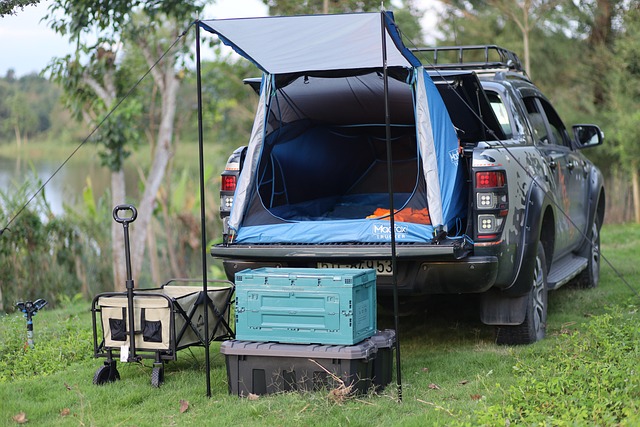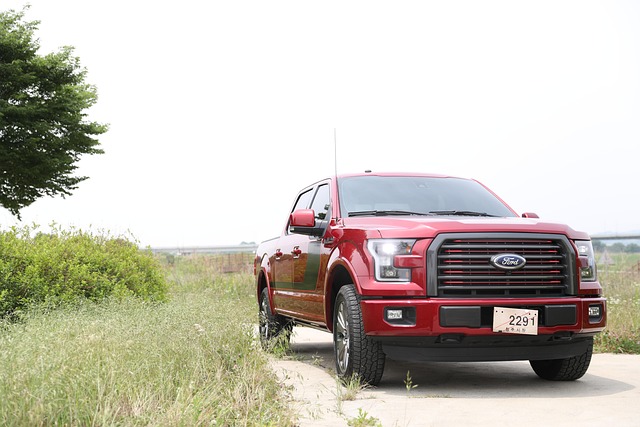Looking to register your car in California? This guide will walk you through the entire process, from understanding the DMV’s VIN verification to receiving your registration certificate and license plate. We’ll break down the necessary documents, application completion, fee payment, and more. By following these steps, you’ll ensure a smooth registration experience. Don’t miss crucial details on the dmv vin verification process, essential for a successful car registration in California.
- Understanding the DMV VIN Verification Process
- Gathering Required Documents for Car Registration
- Completing the California Vehicle Registration Application
- Submitting Your Application and Paying Fees
- Receiving Your Registration Certificate and License Plate
Understanding the DMV VIN Verification Process

When registering your car in California, understanding the DMV VIN verification process is crucial. This involves a thorough inspection of your vehicle’s unique Vehicle Identification Number (VIN), which helps identify its make, model, year, and other critical specifications. The process ensures that the car you’re registering matches the information on record and prevents fraud or unauthorized registration. During this verification, a DMV examiner will cross-check the VIN with their database to confirm the vehicle’s history, including any previous owners or reported accidents.
A key part of this process is utilizing reliable tools like a mobile vin verifier or undergoing a vin inspection. These services provide accurate and efficient data retrieval, making it easier for both you and DMV staff to validate your car’s identity. By embracing modern solutions such as mobile vin verification, the entire registration experience becomes smoother and faster, ensuring that your vehicle’s information is correct and up-to-date with California’s records.
Gathering Required Documents for Car Registration

Before you begin the car registration process in California, it’s crucial to gather all the necessary documents. One vital piece is the Vehicle Identification Number (VIN) verification, which can be conveniently done through a mobile vin inspection or a dmv vin verification. This ensures that your vehicle meets all legal requirements before it can be registered.
Along with the VIN details, you’ll need other crucial paperwork such as proof of ownership, often in the form of a title document, and valid identification like a driver’s license. Additionally, ensure you have insurance documents to prove financial responsibility, and any applicable registration fees ready for payment. A well-organized collection of these documents will make the car registration process at the DMV smoother and faster.
Completing the California Vehicle Registration Application

Completing the California Vehicle Registration Application is a crucial step in the registration process. To begin, gather all necessary documents, including your vehicle’s registration certificate from the previous state, proof of insurance, and a valid driver’s license. Then, access the official California DMV website to download and fill out Form DV-140 (Application for Title and Registration). Ensure all information is accurate and up-to-date, as this will facilitate the DMV VIN verification process.
Remember that the form requires detailed vehicle specifications, including the make, model, year, and unique Vehicle Identification Number (VIN). Accurate entry of this information is essential for a seamless mobile VIN inspection or vin inspection. After completing the application, submit it along with the required fees to your local DMV office. This will trigger further steps in the registration process, which may include additional verifications as needed.
Submitting Your Application and Paying Fees

After completing your application for car registration, it’s time to submit it along with the required documents and fees to the DMV. This process can be done online or in-person at a local California DMV office. The fees for registration vary based on several factors, including the type of vehicle and whether you’re renewing or transferring ownership. Make sure all information on your application is accurate and matches the details on your vehicle’s title and insurance papers.
One crucial step before submitting is to undergo a DMV VIN verification process. This involves checking the vehicle’s unique identification number (VIN) to ensure its authenticity and history. You can do this through various methods, including a mobile VIN inspection or visiting a DMV office for a physical inspection. Completing these steps ensures that your car meets all legal requirements before it receives its official registration.
Receiving Your Registration Certificate and License Plate

After completing your car’s registration process at the California DMV, it’s time to receive your important documents. You’ll be issued a Registration Certificate, which confirms your vehicle’s legal status and details, including its unique Vehicle Identification Number (VIN). This certificate is crucial for future reference and proof of ownership.
Additionally, you can expect to obtain license plates for your car during this process. These plates bear the VIN and other essential information, ensuring that your vehicle is easily traceable and identifiable on California roads. To ensure a smooth experience, many opt for a mobile vin inspection or vin inspection service, which allows for convenient and accurate dmv vin verification right at your location, saving time and effort.
Registering a car in California involves several straightforward steps, beginning with understanding the DMV’s VIN verification process. By gathering all required documents, completing the vehicle registration application accurately, and submitting it along with the necessary fees, you’ll be on your way to receiving your registration certificate and license plate. Remember, a well-prepared application ensures a smooth process, so take the time to organize your paperwork before beginning.
